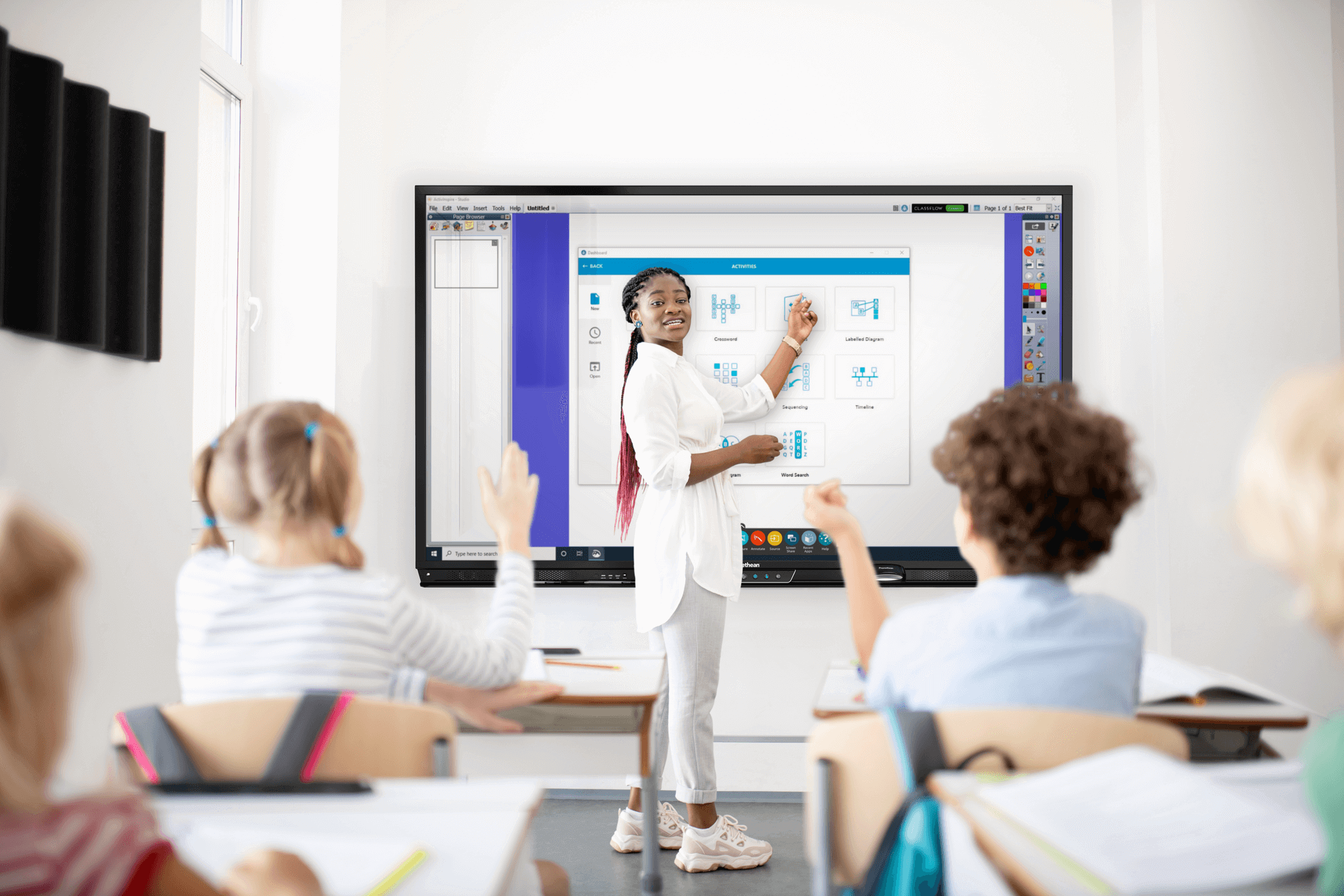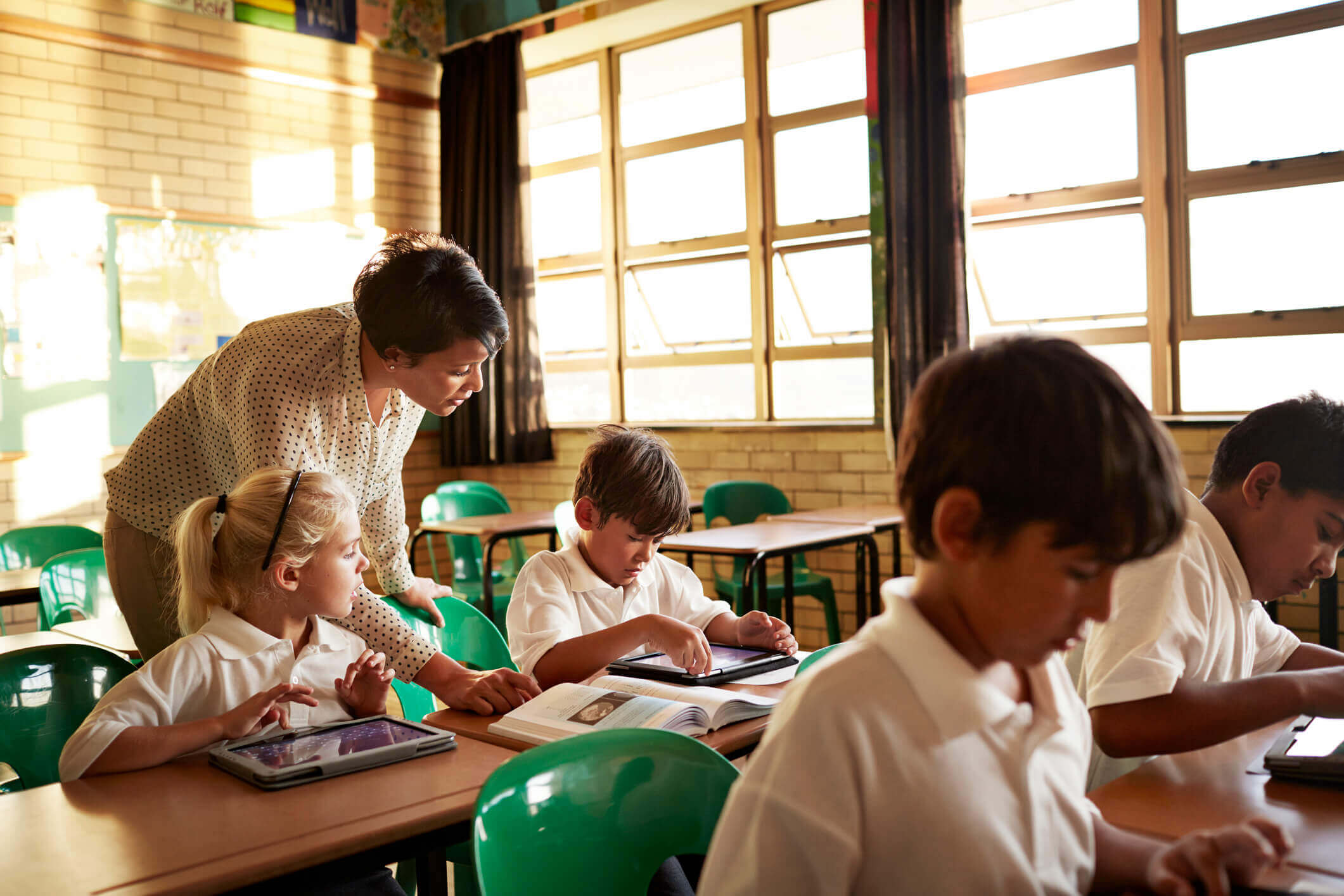Published on December 3rd, 2021
Why technology should be at the heart of all pedagogy teaching methods
11 minute read

You may well have heard the word pedagogy being thrown around in relation to teaching, and if you have, you’ve probably also heard it mentioned in relation to technology. What is a pedagogical approach and how can you implement it in your classroom?
In this article we’re going to clear up everything you need to know about pedagogy, from its definition through to how you can use it hand-in-hand with technology.
What is pedagogy?
Quite simply, pedagogy is teaching. It refers to both the method, art, science and the practice of teaching and primarily applies to teaching as an academic subject or else a theoretical concept. You’ll find that pedagogy is used to include different teaching styles, teaching theory and the method of both feedback and assessment.
That sounds pretty simple, right? In short, it’s a way to talk about the actual profession of teaching and the study of teaching methods. But, there are some nuances, and it’s worth understanding pedagogy in education and how it’s used to reference different teaching methods and learning styles.
What is pedagogy in education?
When you focus on what pedagogy is in education, it generally comes back to learning styles. It’s usually referring to the way teachers go about imparting the local curriculum onto their students.
All teachers understand there are different learning styles and, when a lesson is being created, they’ll consider these styles in their planning. The way a teacher decides to go about teaching a particular lesson will be decided upon based on the teacher’s own experiences, their preferences, the learning environment and a number of other factors. They’ll then work out how best they can support students who all have a different learning style.
So what are these teaching styles and what’s the pedagogical approach to them?
What are the five pedagogical approaches?
There are five distinct pedagogical approaches to the different teaching styles and each focuses on improving the student learning process. These are similar to the traditional types of learning styles and include:
- Constructivist – For a constructivist approach the students and learners are much more actively involved in the learning process. You wouldn’t expect your students to sit quietly and just listen to your class, they’ll be involved and help create meaning through hands-on activities.
- Collaborative – A collaborative approach, unsurprisingly, focuses on people working together. This means your students will form groups and work together towards a goal, helping each other learn and improve.
- Inquiry-based – This approach to teaching involves presenting your students with a problem. The problems will generally be based on reality, and solving them will rely on students probing and asking questions. Providing real world scenarios allows students to apply prior learning and understanding to new challenges. Inquiry-based learning encourages research and active learning, whether it’s online learning or in class.
- Integrative – This approach requires a fully integrated approach across all teachers and every subject. It relies on the same language and terminology being used across a student’s studies. Integrative learning highlights that what students learn in one classroom can be applied to another. Think reading and writing and how those are useful skills in multiple subject areas.
- Reflective – Teachers spend time reviewing, assessing and amending the lessons they deliver. This is critical pedagogy as it requires teachers to learn from their mistakes or improve on the lessons they are planning to teach.
There is a learning theory, known as behaviourist, which is centered on the teacher. While this is not one of the five core pedagogical approaches it forms the basis of most teaching. It relies on a teacher or lecturer at the front of a class delivering lecture based lessons.
All of these approaches are generally applied in combination during the teaching process. Teachers will use different pedagogical processes to encourage blended learning and social development. These methods can be applied in different ways across all age groups, from early learners to higher education.
Defining your own pedagogy
There are so many different approaches to teaching and defining your own pedagogical strategy is important. In the same way that everyone responds to different learning processes, different teachers are better at different pedagogical approaches. It’s important to understand where your strengths are as a teacher and how your lesson plans can benefit from these strengths. A number of pedagogical strategies include:
Encourage collaboration:
For a social learner a lesson plan focusing on small groups is key. Encourage discussion. This will allow students to work cooperatively to a goal. They’ll develop important social skills and learn to respect the ideas others have. Why not try limiting group sizes, or the topics they can work on?
Get students involved:
For a constructive lesson, try and limit the amount of time you’re talking to your students. Direct instruction at the beginning of the class followed by a task is the way to go. Set a challenge requiring students to learn on their own where they may discover something unexpected. Many constructive teachers prefer teaching outside the classroom too.
Another way to get students involved in the learning process is to get them to take on the role of the teacher. They can decide on the subject or present to the class.
Use real world examples
For many learners, being able to relate a lesson back to a real world scenario is essential. More students may understand a problem if they can see a practical application. While some thrive on mental models or blue sky thinking, others rely heavily on theory and practice to really understand a new concept.
Think aloud and encourage curiosity:
Curiosity is a key element of learning. If you can encourage inquisitivity in the classroom you’re already onto a winner. Consider thinking aloud when you’re reading to the class, or rewarding curiosity through gamification. Inquiry based learning relies on giving students the chance to ask questions and be curious.
Leverage technology:
There are so many ways you can add technology to your lessons, whether it’s in the planning stage or delivery. Technology can open the door to a whole new world of learning activities, encourage problem solving and even improve the collaborative process.
Using technology to improve learning outcomes
So how exactly can you leverage technology in the pedagogical process? It’s widely known that technology in the classroom can improve the learning experience for students. Where previous generations had to make do with blackboards and lecture style lessons, technology has opened up a wider range of learning opportunities.
A high-tech approach to teaching isn’t limited to the physical technology in the classroom, like interactive whiteboards or laptops. It can include apps, videos, the Google suite, gamification and much more. Technology can improve the learning environment for students who learn in different ways and it can enable teachers to use methods they previously couldn’t in the classroom.
For teachers, applying pedagogical methods to technology is important. Whether it’s adding video for visual learners, creating models for the whole class, adding social context to lessons or simply enabling teachers to test students in an interactive way, technology is here to improve both teaching and the grades of your students.
Get the most out of your class with interactive whiteboards and software
Whatever way you want to teach your students, keeping them involved in the process is important. When your students come to a classroom and feel like an active participant, it’s only going to help. Promethean creates world leading interactive displays designed with the classroom in mind. Not only that, but we set the standard on teaching software to help you get the most out of your smart technology. Interested in learning more? Visit the virtual demo page to request a live demo of the Promethean interactive display




